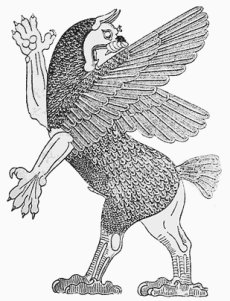|
|
|
In the first days, in the very first days, At that time, it was planted, a tree, a single tree, by the banks of the
Great River, The years passed; five years, then ten years. Then a serpent who could not be charmed The serpent, who could not be charmed, loosened the roots, (from the myth of Inanna and the Huluppu Tree) It is easy to draw comparisons between the stories of the Huluppu Tree and the Garden of Eden, between the serpents and winged beings in both tales, and between the rebellious nature of the tree's inhabitants in Inanna's story and the sly reference to the Nephilim in Genesis. Ultimately, what was home to these rebel beings was torn down and turned into a throne for the Queen of Heaven, much in the same way that what took place in the Garden of Eden is used by many as a platform for 1) the authoritative power of God, 2) the ever-present temptations of the Devil and his serpent and 3) the original sin of mankind for disobeying God. It seems wherever there is myth, the same motifs return, including a serpentine tempter and a winged man-creature. Author Andrew Collins frequently returns to the concept of the "feathered serpent" when discussing the Watchers and Nephilim. But who was Anzu? Anzu was also known by the root Zu ("An" means "sky" in Sumerian), and suggests a passing relationship to the demon Pazuzu. He had a lion's head and body, huge wings, and could walk on two legs like a man. Anzu was called Imdugud, and among other things was known for being able to create whirlwinds, thunder, and sandstorms with his wings, and for stealing the tablet of destiny from Enki/Enlil. |
